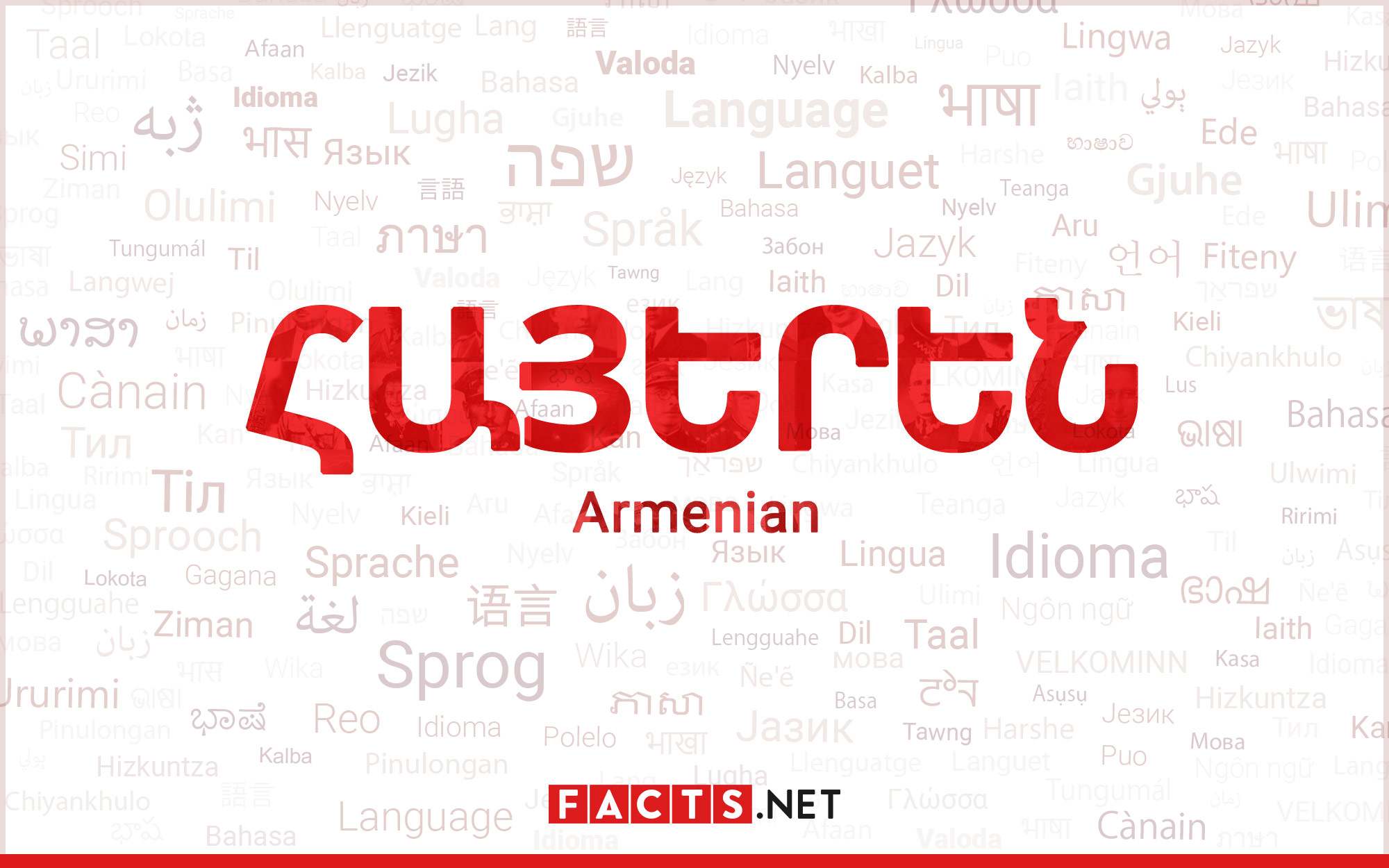
Armenian, the official language of Armenia, is a fascinating and richly diverse linguistic treasure. With a history dating back over 1500 years, Armenian has evolved into a unique and complex language, celebrated for its distinctive alphabet and distinct sound system.
In this article, we will uncover nine astonishing facts about Armenian that will deepen your appreciation for this ancient language. From its role as one of the oldest living Indo-European languages to its significant contributions to literature and culture, Armenian has a captivating story to tell. So, let’s dive into the world of Armenian language and unravel some intriguing facts that will leave you amazed!
Key Takeaways:
- Armenian is one of the oldest languages in the world, with a rich history dating back over 1500 years. Its unique alphabet and literary tradition make it a fascinating subject of study.
- The Armenian language has influenced other languages and has its own branch in the Indo-European language family. Its complex verb conjugation system adds depth and nuance to the language.
Armenian is one of the oldest languages in the world.
With roots dating back over 1500 years, Armenian is considered one of the oldest living languages. Its rich history and unique characteristics make it a fascinating subject of study.
Armenian has its own alphabet.
The Armenian alphabet was invented in the early 5th century by the scholar Mesrop Mashtots. The alphabet consists of 39 letters and has its own distinct script, making it visually captivating.
Armenian has its own branch in the Indo-European language family.
Armenian is not directly derived from any other language. It has its own branch within the Indo-European language family, making it a distinct and independent language.
The Armenian language has a rich literary tradition.
Armenian literature dates back to the 5th century and has a long and illustrious history. The works of renowned Armenian writers and poets have contributed to the cultural heritage of the language.
Armenian has a complex system of verb conjugation.
Armenian verbs have a unique conjugation system with multiple tenses, moods, and aspects. This complexity adds depth and nuance to the language, making it a challenge to master.
The Armenian language has influenced other languages.
Throughout history, the Armenian language has had a significant impact on neighboring languages such as Persian, Turkish, and Russian. This influence is evident in loanwords and linguistic borrowings.
Armenian has dialectal variations.
There are several dialects of Armenian, including Eastern Armenian, Western Armenian, and Classical Armenian. These dialects show variations in pronunciation, vocabulary, and grammar.
Armenian is the official language of Armenia.
As the national language of Armenia, Armenian is spoken by the majority of the population. It plays a vital role in preserving the cultural identity of the country.
Armenian is spoken by the Armenian diaspora worldwide.
Armenian communities exist around the globe, and the language has been preserved through the Armenian diaspora. This widespread use ensures the continued vitality of the language.
Conclusion
Armenian is a truly fascinating language with a rich history and distinct characteristics. From its ancient origins to its unique alphabet, there are many astonishing facts that make Armenian a linguistic marvel. Whether you’re interested in language and culture or simply curious about the world around you, exploring the intricacies of Armenian will undoubtedly captivate your interest.
By delving into the nine astonishing facts about Armenian discussed in this article, you’ll gain a deeper appreciation for this beautiful and complex language. From its status as one of the oldest languages in the world to its widespread global diaspora, Armenian represents a vibrant and resilient linguistic heritage that continues to shape communities and unite people across borders.
So, next time you come across the Armenian language, take a moment to marvel at its incredible history and linguistic features. Whether it’s learning a few Armenian phrases or diving deeper into its grammar and syntax, your journey into the world of Armenian is bound to be a rewarding and enlightening experience.
FAQs
Q: How old is the Armenian language?
A: The Armenian language is over 1,500 years old and is considered one of the oldest living languages in the world.
Q: What is unique about the Armenian alphabet?
A: The Armenian alphabet has its own unique script, consisting of 39 letters. It was created in 405 AD by Saint Mesrop Mashtots and is one of the few national scripts invented independently.
Q: Is Armenian a widely spoken language?
A: Armenian is primarily spoken in Armenia and has an estimated 6.7 million speakers worldwide. Additionally, there are significant Armenian-speaking communities in countries such as Russia, the United States, and Lebanon.
Q: Are there different dialects of Armenian?
A: Yes, Armenian has two main dialects: Eastern Armenian and Western Armenian. Eastern Armenian is the official language of Armenia, while Western Armenian is spoken by the Armenian diaspora.
Q: Are there any loanwords in the Armenian language?
A: Yes, Armenian has borrowed words from various languages throughout its history, including Persian, Turkish, Russian, and English.
Q: Can non-native speakers learn Armenian?
A: Yes, non-native speakers can learn Armenian through language courses, online resources, and immersion programs. However, it may require dedication and practice due to its unique grammatical structure and alphabet.
Q: What is the significance of Armenian in cultural heritage?
A: The Armenian language plays a crucial role in the preservation of Armenian culture and identity. Literature, music, and religious texts written in Armenian have had a profound impact on Armenian heritage and artistic expression.
Q: Is Armenian related to any other languages?
A: Armenian is classified as an independent branch of the Indo-European language family and is not closely related to any other specific language.
Q: Can I visit Armenia without knowing the Armenian language?
A: While knowing some basic Armenian phrases can enhance your travel experience, it is possible to visit Armenia without knowing the language. English is spoken in major tourist areas, and locals are often welcoming and helpful to visitors.
Embark on a captivating journey through the annals of Armenian history, culture, and language. As you've discovered the astonishing facts about the Armenian language, prepare to be equally enthralled by the heroic tale of Sardarapat. This epic battle not only shaped the destiny of Armenia but also left an indelible mark on the nation's identity. Dive deeper into the fascinating world of Armenia and uncover the astounding facts that await you.
Was this page helpful?
Our commitment to delivering trustworthy and engaging content is at the heart of what we do. Each fact on our site is contributed by real users like you, bringing a wealth of diverse insights and information. To ensure the highest standards of accuracy and reliability, our dedicated editors meticulously review each submission. This process guarantees that the facts we share are not only fascinating but also credible. Trust in our commitment to quality and authenticity as you explore and learn with us.


